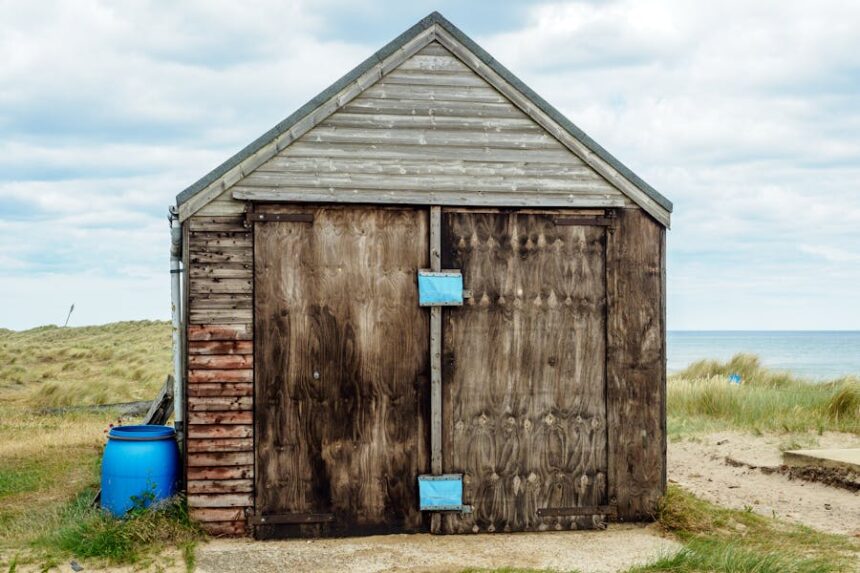Building a solid foundation for your outdoor storage structure determines its longevity, stability, and overall performance. Whether you’re constructing a new shed or replacing an existing one, the foundation serves as the critical base that supports everything above it. Property owners often overlook this crucial element, leading to costly repairs and premature deterioration. When old structures fail due to poor foundation work, many homeowners turn to professional sheds for removal services to safely clear damaged buildings and prepare the site for proper reconstruction with quality foundation systems.
Essential Foundation Requirements
Every shed foundation must meet specific criteria to ensure structural integrity and weather resistance. The base must provide adequate drainage to prevent water accumulation, which causes wood rot, metal corrosion, and pest infestations. Ground preparation involves removing vegetation, debris, and organic matter that could decompose and create settling issues. The foundation must also remain level and stable throughout seasonal temperature changes and soil movement.
Proper foundation design accounts for local climate conditions, soil type, and shed size. Heavy structures require more robust support systems than lightweight storage buildings. The foundation should extend slightly beyond the shed’s perimeter to direct water away from the structure. Additionally, the base must accommodate door swings and provide safe entry points without creating trip hazards.
Foundation Types and Materials
Several foundation options suit different needs, budgets, and soil conditions. Each type offers distinct advantages depending on your specific requirements:
- Concrete slab foundations provide the most durable and permanent solution, ideal for heavy equipment storage and workshops
- Gravel pad foundations offer excellent drainage and cost-effectiveness for standard storage sheds
- Concrete block foundations create elevated platforms that prevent moisture contact and improve ventilation
- Pressure-treated skid foundations allow for easy relocation while providing adequate support for smaller structures
Concrete slabs work exceptionally well for areas with stable soil and minimal frost heaving. The solid surface supports heavy loads and creates a clean, professional appearance. Gravel foundations excel in areas with drainage challenges or where permits restrict permanent structures. Block foundations combine durability with elevation benefits, making them suitable for flood-prone regions.
Critical Construction Factors
Foundation success depends on proper excavation depth, which varies based on frost line requirements and local building codes. Most areas require foundations to extend below the frost line to prevent heaving and cracking during freeze-thaw cycles. Excavation should remove all organic material and loose soil, replacing it with compacted aggregate base material.
Drainage considerations significantly impact foundation performance and shed longevity. Water must flow away from the structure through proper grading and drainage systems. French drains or surface channels may be necessary in areas with poor natural drainage. The foundation should also include vapor barriers where ground moisture poses concerns.
Installation precision affects the entire structure’s alignment and door operation. Level foundations prevent doors from binding, reduce structural stress, and ensure proper weather sealing. Professional installation tools like laser levels and compaction equipment produce superior results compared to basic hand tools.
Maintenance and Long-term Performance
Regular foundation inspection prevents minor issues from becoming major problems. Key maintenance activities include:
- Clearing drainage channels to prevent water accumulation and foundation undermining
- Checking for settlement or shifting that indicates soil movement or inadequate preparation
- Inspecting joint sealing in concrete and block foundations to prevent water infiltration
- Monitoring vegetation growth around the perimeter that could compromise drainage or create pest harbors
Seasonal maintenance becomes particularly important in regions with significant temperature variations. Spring inspections should focus on winter damage from frost heaving or ice accumulation. Fall preparation involves ensuring proper drainage before winter precipitation arrives.
Foundation materials require different maintenance approaches based on their composition and exposure conditions. Concrete benefits from periodic sealing to prevent moisture penetration and freeze damage. Gravel foundations need occasional releveling and additional material to maintain proper grade and drainage. Block foundations require mortar joint inspection and repair to maintain structural integrity.
Quality foundation construction represents a worthwhile investment that protects your storage building for decades. Proper planning, material selection, and installation techniques create a stable platform that withstands environmental challenges while providing reliable service. Taking time to build the foundation correctly eliminates future headaches and ensures your outdoor structure remains functional and attractive throughout its service life.




